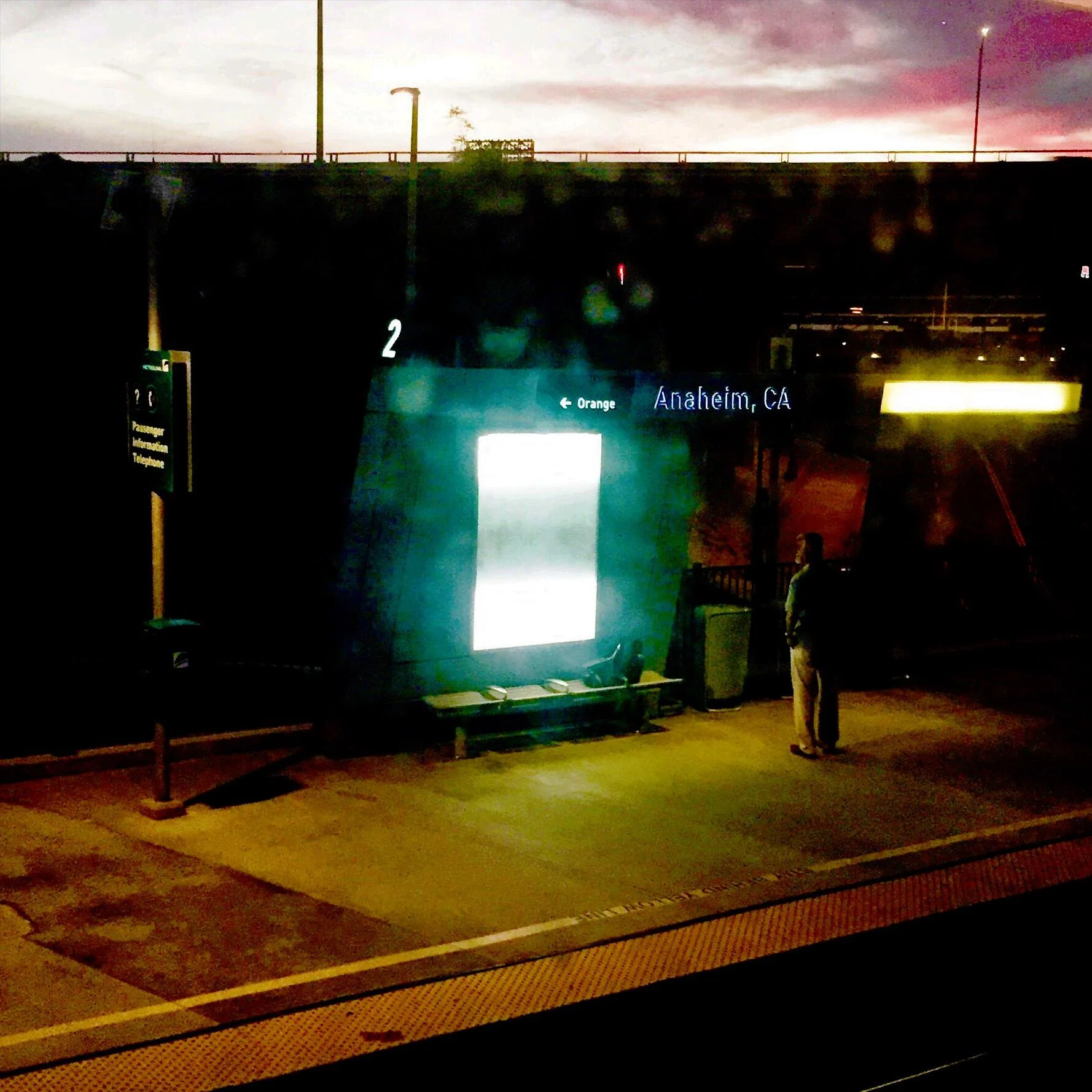Anaheim Regional Transportation Intermodal Center
2626 E Katella Ave (Street View)
Anaheim, CA
The Waite-Smith Fool walks a doomed trajectory that pairs levity with gravity: a cosmic pratfall. The seemingly passive emptiness in his skull and surroundings leads to a sudden, active emptiness beneath his feet. Gravity is the most basic illustration of unseen forces: it operates even in spaces where matter is absent. What is important here, however, is that the void that lies before The Fool is an active measure. It took millions of years of hydraulic erosion for the gods to pull off this prank.
The Magician has an inverse relationship with his surroundings. He is, in some sense, the ace of majors, and each of the minor aces is visible on the altar before him. His gestures show that he knows what the stars have in store for him, and he plans his next move accordingly, joining the above and below. For the Magician, there is always another way forward, another option: all of the elements are potential tools towards his own ends. I have heard it argued before (though I am not sure who first posited this) that the Fool’s knapsack contains the same implements as those available to the Magician— he simply does not yet know what it is that he carries.
The universe acts on the Fool, and, in turn, the Magician acts on the universe.
It is worth noting that Einstein’s development of the gravitational field equations overlap in time with the artistic design of the Waite-Smith Tarot: the mysteries of gravity were being revealed to mankind in a process beginning in 1905, and ending in 1915 with a perfected calculation of Mercury’s perihelion (anyone who studies the astrological correspondences of Tarot will immediately see the significance of this). This working demonstrated that mankind had underestimated what had long been considered to be empty space, as it and time had been one-in-the-same all along. Prior to this shift, the precipice, now a staple of modern variations on The Fool, was missing from the art.
The divine comedy during which mankind slipped and fell into four-dimensional space led to the mastery of atomic energy, and the remainder of the twentieth century was defined by the spectrum of its resultant technologies. It is also from this innovation that astronomers learned the true positions of the stars in space-time, and that our relation to the heavens at any given moment was inseparable from the position of the world beneath us.
This first transition point between majors is the crossing of a threshold of no return which informs the meaning of both cards in a spread. This is not, in itself, an initiation into secrets, but it is the point beyond which the universe no longer resembles itself, and outside wisdom must be sought to make sense of it all. When Robert Oppenheimer saw himself in a botched translation of the Bhagavad Gita, he knew that something fundamental about reality had had been revealed as a consequence of the Manhattan Working, but at that moment, he couldn’t have known about a future of Hiroshima and Nagasaki, of mutually-assured destruction and chemotherapy, of Chernobyl and Fukushima.
Just as the threshold between three and four dimensional space was breached in the last century, the thresholds between fiction and nonfiction, as well as the virtual and physical, are currently being breached in the one we now occupy. The epistemological changes that follow are not yet clear, and left as an exercise to the reader.

